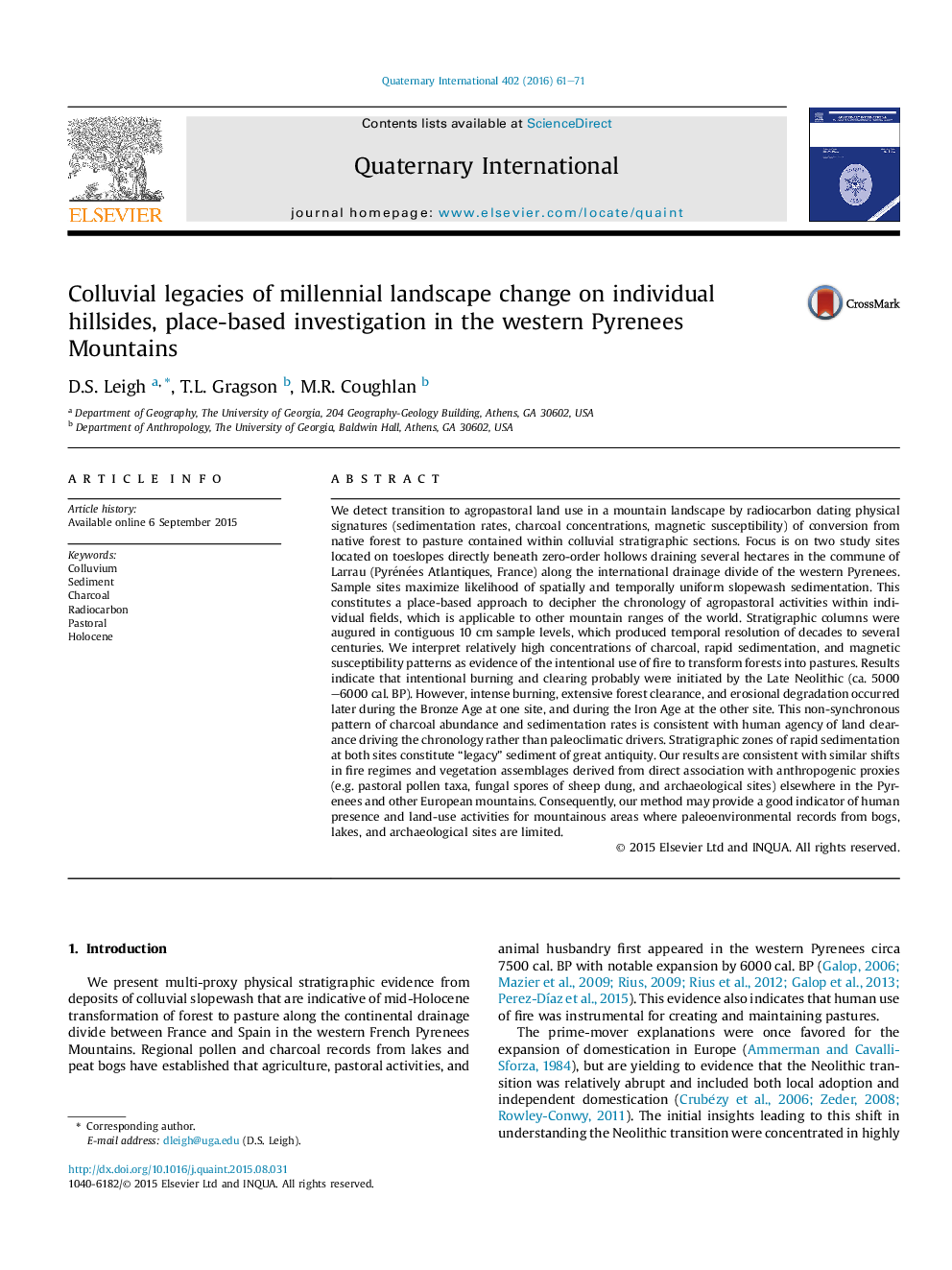| کد مقاله | کد نشریه | سال انتشار | مقاله انگلیسی | نسخه تمام متن |
|---|---|---|---|---|
| 1040159 | 1484096 | 2016 | 11 صفحه PDF | دانلود رایگان |
We detect transition to agropastoral land use in a mountain landscape by radiocarbon dating physical signatures (sedimentation rates, charcoal concentrations, magnetic susceptibility) of conversion from native forest to pasture contained within colluvial stratigraphic sections. Focus is on two study sites located on toeslopes directly beneath zero-order hollows draining several hectares in the commune of Larrau (Pyrénées Atlantiques, France) along the international drainage divide of the western Pyrenees. Sample sites maximize likelihood of spatially and temporally uniform slopewash sedimentation. This constitutes a place-based approach to decipher the chronology of agropastoral activities within individual fields, which is applicable to other mountain ranges of the world. Stratigraphic columns were augured in contiguous 10 cm sample levels, which produced temporal resolution of decades to several centuries. We interpret relatively high concentrations of charcoal, rapid sedimentation, and magnetic susceptibility patterns as evidence of the intentional use of fire to transform forests into pastures. Results indicate that intentional burning and clearing probably were initiated by the Late Neolithic (ca. 5000–6000 cal. BP). However, intense burning, extensive forest clearance, and erosional degradation occurred later during the Bronze Age at one site, and during the Iron Age at the other site. This non-synchronous pattern of charcoal abundance and sedimentation rates is consistent with human agency of land clearance driving the chronology rather than paleoclimatic drivers. Stratigraphic zones of rapid sedimentation at both sites constitute “legacy” sediment of great antiquity. Our results are consistent with similar shifts in fire regimes and vegetation assemblages derived from direct association with anthropogenic proxies (e.g. pastoral pollen taxa, fungal spores of sheep dung, and archaeological sites) elsewhere in the Pyrenees and other European mountains. Consequently, our method may provide a good indicator of human presence and land-use activities for mountainous areas where paleoenvironmental records from bogs, lakes, and archaeological sites are limited.
Journal: Quaternary International - Volume 402, 26 May 2016, Pages 61–71
